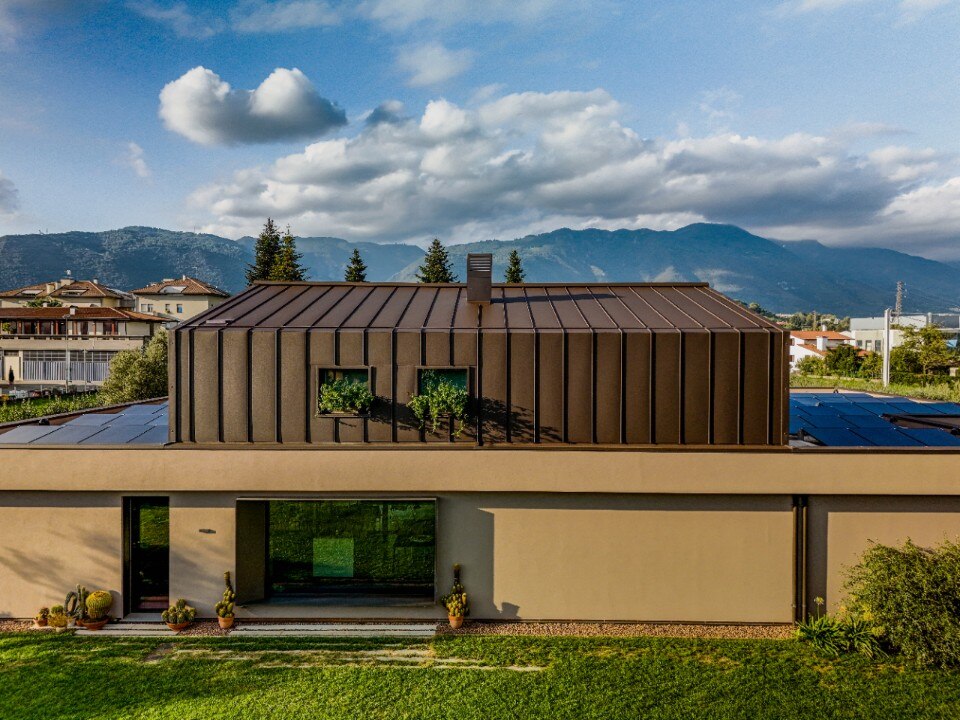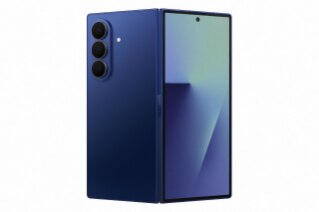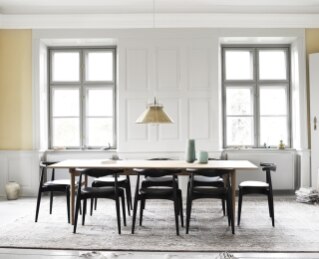Tord Boontje
European designer Tord Boontje has created a multi-sensory three-gallery installation featuring furniture, lighting and laser-cut fabrics in themes of black, gold and white. As part of this site-specific installation, a team of Philadelphia University students, faculty, and staff have been working with Boontje’s designs, hand-weaving raffia into pieces for a large lace curtain to hang in the gallery windows. Boontje says the vocabulary of lace in his work emerged through “cutting away rather than building up. It was through direct translations of nature, looking up to the sky through the layers of sunlit foliage – these kinds of things remind me of lace.”
What interested you about the historic Quaker Lace Company collection at The Design Center?
I like that there is a local past, a tradition in lace making and the romantic memory of lace in fashion and interior use.
How has your use of lace as a motif developed or changed over time?
Lace is not really a motive for me but a structure. The narrative of the work for this exhibition has probably become more complex and abstracted than before, but my other work has been developing also in this way.
Your choice of materials challenges conventional notions of lace. How do you select the materials for your work?
Materials are incredibly important to me, every material has a different resonance, it also has something to say about our times we live in, what are people concerned with right now, what are my instincts about this... For the lace exhibition, I started using grass to make my first samples. As this was a testing and thinking stage, I did not want to use any materials that would compare to a skilled tradition and convention. For the next samples and pieces, I started using raffia as a more durable material. I feel somehow these materials are socially relevant now. Visiting Africa and seeing villages completely [built] out of grass and palm fonts, I realized that what seems to us forgotten and unusual materials, are actually for a huge part of the world population completely normal, everyday materials. Materials that are organic, nonpolluting, free, sustainable and beautiful to live with.
Demakersvan
Dutch design studio Demakersvan has designed a hand-made “lace” chain-link fence installation for The Design Center’s front yard. The Lace Fence at The Design Center, approximately 170 feet in length, is Demakersvan’s first major outdoor installation in the United States. “Industrial production is for us a big source of inspiration,” says Joep Verhoeven, one of three founding designers of Demakersvan. “In our projects we often combine the sensitive and the small with the powerful, large and industrial. The Lace Fence project translates that line of thinking. Fencing is a sign of how we have modified and cultivated our environment. We wanted to explore what would happen if a patch of embroidered wire met with and continued as an industrial fence.”
How do fences traditionally function, compared to how your Lace Fence functions in the world?
You see industrial chain link fences all over the world, and they all have the same color, or same idea. So people don’t really appreciate them, but they actually have a high value if you really start to think about. We wanted to combine this industrial idea with the concept of craft – to balance it, in the sense that the value is equal to the appreciation. What I really like about the Lace Fence, is that it’s not only something to consider as an art piece, but it’s also a functional product.
How did you come to working with lace?
I did pretty extensive research in techniques of how fabric is made, and actually the only technique that is suitable for going to a more rigid, thick wire is lace. The Lace Fence is actually almost literally an enlargement of the lace, what they used in the early days. For me personally, I was always intrigued by lace, in the sense that there is so much time and effort in it, and you really feel that somebody worked on it – and so you feel some identity in it.
Cal Lane
For Lace in Translation, Canadian artist Cal Lane has contributed an environmental installation in The Design Center’s enclosed backyard garden area. The installation includes a 600-pound welded filigree oil tank. Lane formerly worked as a welder and today uses her welding torch to cut doilies and baroque patterns into objects such as wheelbarrows, I-beams, dumpsters and shovels. “I was cleaning the metal shop up one day,” Lane says, “and as a joke, I put real lace doilies on top of the equipment after I cleaned them – on the band saw, anvil, drill press. Visually I liked the contrast of materials, the white clean delicate lace draped over this dirty cold steel machine... This brought me to creating industrial doilies... [which] were to me a symbol of contrast and balance, by placing together visual oppositions: male and female, tough and delicate.” Lane says she likes “to work as a visual devil’s advocate, using contradiction as a vehicle for finding my way to an empathetic image, an image of opposition that creates a balance - as well as a clash - by comparing and contrasting ideas and materials. Her works consider industrial and domestic life, as well as relationships of strength and delicacy, the masculine and feminine, the practical and the frivolous, ornamentation and function.
How did you begin to work with lace?
I started using this lace tablecloth that my parents got as a wedding gift. I transferred the pattern onto a wheelbarrow and then hand cut it by using a plasma cutter. With this piece the notion of labor is celebrated. After that, I went to the lace museum in Belgium and saw how handmade lace was made. I was attracted to the focus and repetitive motion of the work, much like welding and cutting. I began to learn the patterns and techniques of lace making through welding.
Lace can both expose and conceal. Has that characteristic influenced your designs?
The metaphor of lace further intrigued me by its associations of hiding and exposing at the same time; like a veil to cover, or lingerie to reveal. It also introduces a kind of humor through the form of unexpected relationships.
How do you select the materials for your work?
As a material I love how steel can be manipulated; as a metaphor I love how the material relates to the industrial, functional, structural. A material of strength and power and masculinity. The material itself carries a lot in the way of symbols, when the material is in the form of an object like a wheelbarrow, oil drum, dumpster or car it creates further associations. I love to work with and against these symbols when altering objects.

A house turns its back on the road to open up to the landscape
The single-family house project designed by Elena Gianesini engages in a dialogue with the Vicenza landscape, combining tranquility and contemporary style through essential geometries and the Mazzonetto metal roofing.










